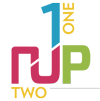Namibia faces second-hand vehicle shortage
Under pressure
Expert warns of imminent crisis as pre-owned vehicle supply dwindles
The Namibian automotive industry is grappling with a looming shortage of second-hand vehicles, a situation that could significantly impact consumers and businesses alike. Phillip van der Merwe, sales manager at Indongo Toyota, sounded the alarm during a consultative meeting hosted by the United Nations Economic Commission for Africa, urging policymakers to rethink vehicle financing regulations to stimulate the market.
Van der Merwe highlighted that Namibia's vehicle market is shrinking, with second-hand models becoming increasingly scarce. He attributed this decline to restrictive financing policies, such as the requirement for a 10% deposit on vehicle purchases. “Our market is declining, and we need new resources and strategies to stimulate the retail sector. If we compare Namibia to South Africa, our biggest trading partner, their legislation makes it easier for consumers to purchase vehicles,” he said.
Financing reform
To address the issue, van der Merwe proposed eliminating the deposit requirement for new vehicle purchases. He argued that this change would make new cars more accessible to the public, ultimately replenishing the second-hand market over time. “In order to stimulate the automotive industry for the next three years, we need the government and the Bank of Namibia to revisit vehicle financing policies. Removing the deposit requirement would allow longer repayment terms, making vehicles more affordable,” he said.
Van der Merwe warned that the industry would face significant pressure in the next two years due to limited availability in the second-hand market. “At least for two years, we’re going to struggle. In 2018, Namibia recorded 10,000 car sales; by 2020, this dropped to 8,000 units, and in 2021, only 6,800 units were sold. These are very low numbers,” van der Merwe said.
Supply challenges in second-hand market
Currently, only 60% of new vehicles eventually enter Namibia’s second-hand market. Van der Merwe emphasized that while legislation ensures affordability for used cars, there simply aren’t enough vehicles available to meet demand. “The laws serve a good purpose by keeping used cars affordable, but we don’t have enough supply in Namibia to satisfy demand,” he said.
Despite these challenges, there are signs of recovery in new vehicle sales. IJG reported a 1.7% year-on-year increase in February 2025, with growth observed in passenger and medium commercial vehicle segments. However, sales of light and heavy commercial vehicles remained slightly lower compared to February 2024. “The 1.8% year-on-year growth in cumulative new vehicle sales to 12 885 indicates a marginal upward trend supported by the current low-interest rate environment,” IJG said.
Van der Merwe highlighted that Namibia's vehicle market is shrinking, with second-hand models becoming increasingly scarce. He attributed this decline to restrictive financing policies, such as the requirement for a 10% deposit on vehicle purchases. “Our market is declining, and we need new resources and strategies to stimulate the retail sector. If we compare Namibia to South Africa, our biggest trading partner, their legislation makes it easier for consumers to purchase vehicles,” he said.
Financing reform
To address the issue, van der Merwe proposed eliminating the deposit requirement for new vehicle purchases. He argued that this change would make new cars more accessible to the public, ultimately replenishing the second-hand market over time. “In order to stimulate the automotive industry for the next three years, we need the government and the Bank of Namibia to revisit vehicle financing policies. Removing the deposit requirement would allow longer repayment terms, making vehicles more affordable,” he said.
Van der Merwe warned that the industry would face significant pressure in the next two years due to limited availability in the second-hand market. “At least for two years, we’re going to struggle. In 2018, Namibia recorded 10,000 car sales; by 2020, this dropped to 8,000 units, and in 2021, only 6,800 units were sold. These are very low numbers,” van der Merwe said.
Supply challenges in second-hand market
Currently, only 60% of new vehicles eventually enter Namibia’s second-hand market. Van der Merwe emphasized that while legislation ensures affordability for used cars, there simply aren’t enough vehicles available to meet demand. “The laws serve a good purpose by keeping used cars affordable, but we don’t have enough supply in Namibia to satisfy demand,” he said.
Despite these challenges, there are signs of recovery in new vehicle sales. IJG reported a 1.7% year-on-year increase in February 2025, with growth observed in passenger and medium commercial vehicle segments. However, sales of light and heavy commercial vehicles remained slightly lower compared to February 2024. “The 1.8% year-on-year growth in cumulative new vehicle sales to 12 885 indicates a marginal upward trend supported by the current low-interest rate environment,” IJG said.





Comments
Namibian Sun
No comments have been left on this article